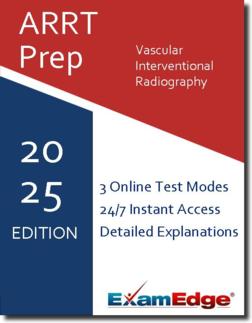ARRT® Vascular-Interventional Radiography (VI) Practice Tests & Test Prep by Exam Edge - Blogs
Based on 32 Reviews
- Real Exam Simulation: Timed questions and matching content build comfort for your ARRT Vascular-Interventional Radiography test day.
- Instant, 24/7 Access: Web-based ARRT Vascular-Interventional Radiography practice exams with no software needed.
- Clear Explanations: Step-by-step answers and explanations for your ARRT exam to strengthen understanding.
- Boosted Confidence: Reduces anxiety and improves test-taking skills to ace your ARRT Vascular-Interventional Radiography (VI).

Exam Edge Blogs for ARRT Vascular-Interventional Radiography

ARRT VI Exam Pass Rate: Latest Certification Insights
Every year, a large number of radiology professionals seek to advance their careers by taking the American Registry of Radiologic Technologists (ARRT)...
Read MoreExam Edge Blogs for ARRT Vascular-Interventional Radiography

ARRT VI Exam Pass Rate: Latest Certification Insights
Every year, a large number of radiology professionals seek to advance their careers by taking the American Registry of Radiologic Technologists (ARRT)...
Read More

